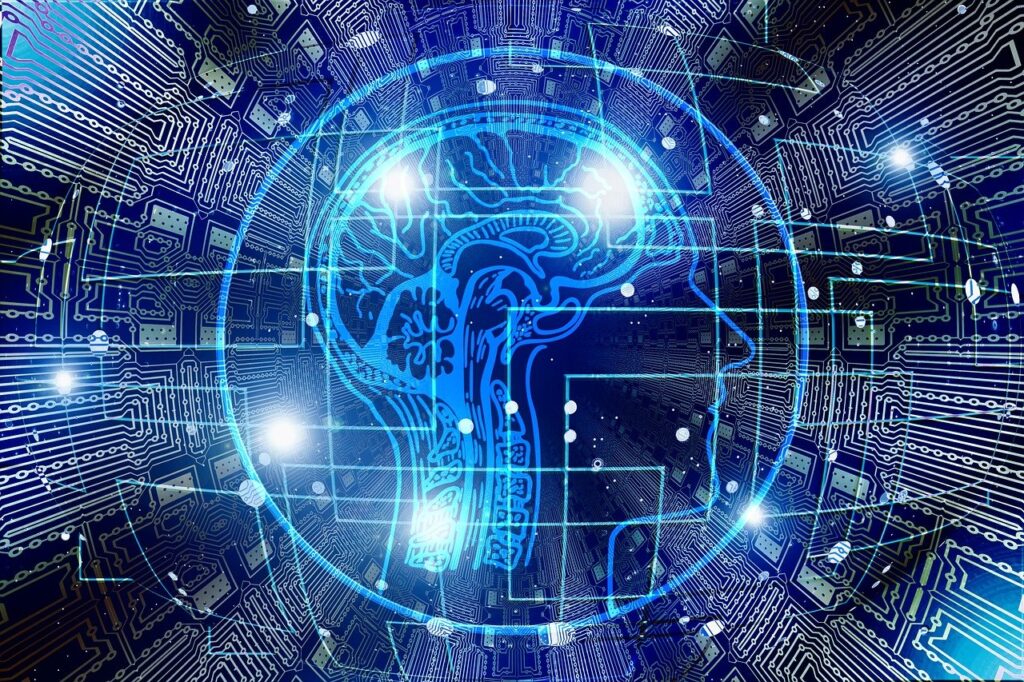
Artificial Intelligence (AI) can help usher in a new era of human resource management, where data analytics, machine learning and automation can work together to save time, and provide information, insights and recommendations in near real-time.1 According to Gartner, 81% of HR leaders have explored or implemented artificial intelligence (AI) solutions to improve process efficiency within their organizations. Gartner expects generative AI solutions to become embedded in current and new HR technology providers in the next one to three years. Generative AI could first begin to appear in the natural language processing (NLP) space (virtual assistants, chatbots, data processing etc.).2 The Oracle and Future Workplace AI at Work Global Study 2019 found that 50% of workers were already using some form of AI at work.3
Potential Shifts in HR Ways of Working
Artificial intelligence will have an effect on the work conducted by the HR function, across the employee life cycle. This includes HR operations from onboarding to exit, spanning across talent acquisition, employee engagement, learning and development, total rewards, talent management and service management.
In talent acquisition, an AI algorithm could predict which sourcing channels would most likely attract the right candidates for a specific skill set or role, optimise sourcing spend, and suggest employee profiles which may hold higher probability of success and fit for an organization.4 On the other side, it could alert the candidates with the right skill sets to available jobs. In learning and career development, employees could get curated development and personalized recommendations that maximize career potential. Instructional design could also be impacted, with increased accessibility, flexibility and convenience. In compensation, AI could help analyze a wealth of data points relative to the local market and competitor data. It could provide analytics and recommendations on relevant benefits. AI-powered HR chatbots or assistants could help empower employees with quick, efficient service support.5 Real time inputs on performance at the individual, team and organization level, engagement and culture, leading to indicators on organizational outcomes would be impactful. As the size of HR teams get smaller, AI assistants could guide managers and leaders on right approaches for managing performance and high performing teams. Available external environment data could be analysed for proactive decisions and actions. Applications that use generative AI capabilities (such as ChatGPT, Bard, DALL-E) could improve the efficiency of the HR team and function.
Talent Strategy
Since fewer people will be needed to complete the same amount of work, it would be realistic to anticipate lesser headcount needs over time. The nature and content of work itself would change. Jobs disrupted by AI may need to be redesigned to encompass broader, comprehensive competencies with a more compelling employee value proposition.6
To meet these quickly evolving needs, leaders may need to revisit the six kinds of investments (six ‘B’s) needed to upgrade talent – Buy, Build, Borrow, Bound, Bounce, Bind.7 For the Build/training approach, organizations may focus on upskilling, reskilling and new skilling initiatives. Reskilling involves training employees on an entirely new set of skills to prepare them to take on a different role. This typically occurs when workers’ previous tasks or responsibilities become irrelevant. As opposed to reskilling’s 180-degree pivot, upskilling occurs when workers improve upon existing skills and deepen their abilities and impact within their area of expertise. The term new skilling represents all types of continuous learning to help build high-demand skills. A new skilling mindset keeps both a workforce and a company agile by ensuring learning initiatives are relevant to future business objectives.8 Performance expectations could vary significantly in newly configured roles and environment.
AI would influence employee expectations about how employees interact with HR teams and tools. Over time, this shift will lead to rethinking the purpose, objectives, skillset and structure of HR roles and the overall function. Along with the increased requirements, leading/managing with the updated knowledge of psychology, neuroscience, culture, change, leadership, organization behaviour, business acumen and technology will give influential HR leaders and teams a distinct advantage. Change management could become a critical competency requirement for the whole team.
Workforce Planning
Since AI investments will lead to the obsolescence of many tasks, while creating the need for new skills and roles, this shift involves proactive planning, change management and updating the capabilities of the overall workforce. Proactive workforce planning based on a deep analysis of phases of change becomes critical for the success of any organization. New, specialized, complex jobs may emerge where generative AI and related technologies are used, resulting in competitive advantage.
Culture Intersection
A major change like this cannot be possible without shift in mindsets and behaviours. This inevitably intersects with organizational culture elements. HR teams that proactively assess, plan and facilitate the culture and mindset shift for the organization would play a fundamental role in facilitating this transformation successfully.
Concerns
While AI is creating excitement, there are concerns about aspects like accuracy, privacy, bias and reliability. Any information posted may be used to further train the model, raising concerns about confidentiality. Generative AI learns based on historical data, and historical patterns of data may reflect biases. Instances of bias in AI tools have come to light, offering case studies in the limitations of machine learning (eg. talent acquisition tool bias).9 Recent guidance from The Equal Opportunity Employment Commission (EEOC) in the U.S. clarified that bias in AI tools may violate discrimination protections, and employers who use them could be held accountable.10
Therefore, it becomes critical to involve all points of view while planning and implementing AI adoption. While the value and transformation potential of GenAI are real, so too are the technical, implementation, and change management challenges. The time-saving potential can vary significantly based on industry-specific contexts. Consulting firm BCG recently found that support functions such as technology, operations, and customer support showed the highest potential productivity gains from GenAI deployment. Looking at GenAI activities across the company will help to ensure that the sum of efforts is greater than its parts, leading to transformative change rather than incremental refinement.11 The true potential of mature AI solutions may take time. Initial rollouts might result in less-than-desired experiences. Organizations must also acknowledge and guide about potential risks of generative AI and using sensitive or confidential data. A recent incident of sensitive data leak from a large corporation accidentally to ChatGPT, led to the company crack down on usage of the generative AI services.12 AI is also susceptible to hacking. The ethical and fairness elements have to be thoroughly assessed and analysed. Government regulation, policy, and international standards also play a fundamental role in our society.13. Labor relations and unions could also play a key role in this transformation.
While this is an exciting time for HR leaders and teams to be part of this evolution, prioritising change agility, curiosity, experimentation, growth mindset, risk awareness and development for self, team and the organization will increase chances of success. Modernizing talent capabilities within the function will become non-negotiable. When unique human capability, diversity and potential are augmented (not replaced) by AI, the stage for immense creativity and innovation is established. It looks clear that this is the beginning of a long, transformational journey and any future HR strategy without incorporating AI would seem incomplete.
ChatGPT – Inputs about AI Applications in HR
Since this is an article on AI, I gathered consolidated inputs below from ChatGPT regarding AI applications in HR. Readers may assess the similarities and differences between the above and below sections. I see the value in augmenting insights, while maintaining the creativity, unique connections, thought process and wisdom of an expert. Even here, the ability to ask the right questions or prompts through specific inputs seems important. If you want good outputs, you may need to provide good inputs, apply experimentation and thinking.14
AI applications in HR are designed to streamline processes, enhance decision-making, and improve overall efficiency. Here are some common AI applications in HR:
Recruitment and Talent Acquisition
Resume Screening: AI algorithms can analyze resumes quickly and efficiently, identifying relevant qualifications, skills, and experience.
Chatbots for Initial Interaction: AI-powered chatbots can engage with job candidates, answer basic questions, and even conduct preliminary interviews, saving time for both candidates and HR professionals.
Predictive Analytics: AI can analyze historical data to predict which candidates are more likely to succeed in a particular role, improving the quality of hiring decisions.
Employee Onboarding
Virtual Assistants: AI-powered virtual assistants can guide new employees through the onboarding process, providing information on company policies, procedures, and answering common questions.
Employee Engagement
Pulse Surveys: AI can analyze employee feedback and sentiment from surveys and other sources to gauge overall engagement levels and identify areas for improvement.
Personalized Learning: AI can recommend personalized training and development programs based on an employee’s skills, performance, and career goals.
Performance Management:
Feedback and Recognition: AI can facilitate real-time feedback and recognition, helping managers provide timely acknowledgment of employee achievements.
Performance Predictions: Predictive analytics can help identify patterns in employee performance data, allowing HR to anticipate potential issues and take proactive measures.
HR Analytics:
Predictive Analytics for Turnover: AI can analyze various factors to predict which employees are at a higher risk of leaving the company, allowing HR to take preventive measures.
Workforce Planning: AI can assist in forecasting future workforce needs based on historical data and market trends.
Employee Assistance and Support:
Chatbots for HR Queries: AI-powered chatbots can handle routine HR queries, providing quick and accurate information to employees.
Wellness Programs: AI can support employee well-being by providing insights into stress levels, workload, and suggesting personalized wellness programs.
Diversity and Inclusion:
Bias Detection: AI algorithms can help identify and minimize unconscious biases in job descriptions, recruitment processes, and performance evaluations, promoting diversity and inclusion.
Compliance and Risk Management:
Monitoring Compliance: AI can assist in monitoring and ensuring compliance with HR policies and legal regulations, reducing the risk of non-compliance.
Implementing AI in HR requires careful consideration of ethical concerns, data privacy, and the potential impact on the employee experience. However, when used responsibly, AI can significantly enhance HR processes, allowing professionals to focus on strategic initiatives and creating a more engaging and efficient workplace.15
Sources:
1 Artificial intelligence and a new era of human resources; https://www.ibm.com/blog/artificial-intelligence-and-a-new-era-of-human-resources/
2 4 6 AI in HR: A Guide to Implementing AI in Your HR Organization; https://www.gartner.com/en/human-resources/topics/artificial-intelligence-in-hr
3 5 AI In Human Resources: The Time Is Now; https://www.oracle.com/a/ocom/docs/applications/hcm/oracle-ai-in-hr-wp.pdf
7 HR Transformation; https://www.rbl.net/insights/books/hr-transformation-building-human-resources-from-the-outside-in
8 Understanding the difference between reskilling, upskilling and new skilling; https://www.cornerstoneondemand.com/resources/article/difference-between-reskilling-upskilling-new-skilling/
9 Insight – Amazon scraps secret AI recruiting tool that showed bias against women; https://www.reuters.com/article/us-amazon-com-jobs-automation-insight/amazon-scraps-secret-ai-recruiting-tool-that-showed-bias-against-women-idUSKCN1MK08G/?utm_source=morning_brew
10 Does Your Company Use AI in Hiring? Better check your bias; https://www.hr-brew.com/stories/2023/05/19/does-your-company-use-ai-in-hiring-better-check-your-bias
11 The Path to Generative AI Value Begins with a Workforce Diagnostic; https://www.bcg.com/publications/2023/assessing-the-impact-of-generative-ai-on-workforce-productivity?utm_campaign=genai_bcgxamp;utm_content=202311_send3_aws2023amp;utm_description=featured_insightsamp;utm_geo=globalamp;utm_medium=emailamp;utm_source=espamp;utm_topic=aiamp;utm_usertoken=c88440b7c5ed0b6435b4a5af1ad86485213a6388amp;mkt_tok=Nzk5LUlPQi04ODMAAAGPv4vVMs6nLBPTHjS2FWbTPXieARUy-g2_7gDqhquR-oaUfGWTOkkMvqmBAbJ1MrOVA6rfMr_KjUVkPaccAXfby18cwcpRuqfyyXFYaAwH28E
12 Samsung bans use of generative AI tools like ChatGPT after April internal data leak; https://techcrunch.com/2023/05/02/samsung-bans-use-of-generative-ai-tools-like-chatgpt-after-april-internal-data-leak/
13 Generative AI and The Future of HR; https://www.mckinsey.com/capabilities/people-and-organizational-performance/our-insights/generative-ai-and-the-future-of-hr
14 How to Craft the Perfect ChatGPT Prompt; https://www.linkedin.com/pulse/how-craft-perfect-chatgpt-prompt-charlene-li-kowge/
15 ChatGPT – AI Applications in HR
Picture Credit: Gerd Altmann (Pixabay)



Recent Comments